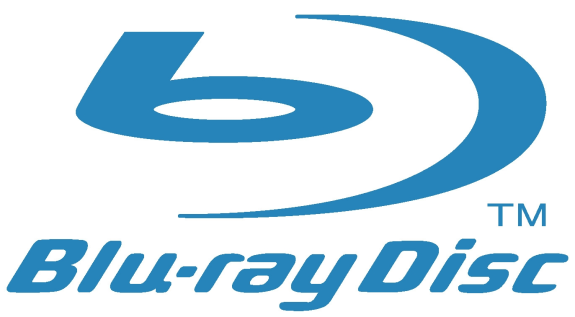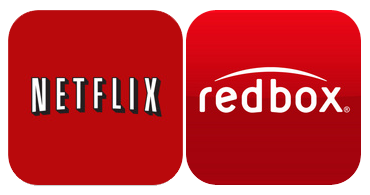Cinavia DRM: How I Learned to Stop Worrying and Love Blu-ray’s Self-Destruction
by Ganesh T S on March 21, 2012 11:00 AM EST- Posted in
- Home Theater
- Blu-Ray
- DRM
- Cinavia
DRM (Digital Rights Management) is intended to protect media from being played in an unauthorized manner. However, more often than not, it fails to serve the purpose. Many people in the content industry are fully aware that it is not possible to stop media piracy. They view DRM as a method to slow down the pirates. The panel discussion on anti-piracy measures at the HPA 2011 Tech Retreat compared this to using a key to lock a car, even though a thief with proper equipment could still steal it.
High definition content is valued by the content owners, resulting in extra efforts being taken to protect them from being pirated. For example, while standard definition Netflix streams play on a variety of platforms, high definition streams require more secure systems with protection across all stages of playback. Similarly, not much effort has been taken to stop the usage of open source DVD decrypters / decoders, which mean that the consumer doesn’t need to invest in a licensed player to play back DVDs. Open source software like VLC can play back protected DVDs without any issues.
Blu-rays, on the other hand, with their high definition content, are yet to be hacked enough to be played back with full experience using open source tools. There is a constant tussle going on between the decryption tool makers (who enable the Blu-ray disc content to become unprotected) and the Blu-ray publishers who don’t want this to happen (and try to find new ways to encrypt their Blu-rays without breaking player compatibility in the field). The net result is that almost every new Blu-ray fails to play back on a player if it doesn’t have the latest firmware updates. This is obviously a drawback for consumers who just want to put the disc in the tray and enjoy the movie.

In today’s piece, we will be concentrating exclusively on Blu-rays. A look at the market trends seems to indicate that online streaming services like Netflix and Hulu are overtaking conventional media distribution channels such as DVDs and Blu-rays. However, this doesn’t mean that optical media will die out anytime soon. Currently, a large number of consumers don’t have reliable enough Internet access to guarantee a good experience with premium streaming services. Market research indicates that Blu-ray sales have indeed shown an annual increase. This growth can be attributed to the low cost of Blu-ray players (some could be found for as low as $49 last November) and the rising number of $5 Blu-rays available in the bargain bins of various big box retailers. Blu-ray rentals from companies such as Redbox have also shown an increase in popularity.

The BDA sees Blu-ray shipments growing for the foreseeable future. However, they have also realized that the future of the Blu-ray industry lies in eventually adapting to the cloud / Internet infrastructure. The UltraViolet initiative is geared towards this. We will look at this in detail later in the piece.
The rise of VoD services will definitely threaten Blu-ray, particularly because of the ease of use associated with them. In almost all cases, one can start watching a movie on Netflix or Vudu with a few clicks. Compare this with current Blu-rays where users have to put up with a number of trailers and copyright messages before the movie starts playing. It is no wonder that consumers with high speed Internet often prefer services like Vudu over Blu-rays. Given this situation, Blu-rays continue to come with pesky DRM mechanisms. The latest in this lineup is Cinavia. Before going into its details, we will have a brief overview of all the DRM mechanisms involved in Blu-rays.










121 Comments
View All Comments
archer75 - Wednesday, March 21, 2012 - link
Clearly your out of touch with how things are done now. MKV's are indeed the way to go for HD and have been for quite a while now. AVI's? Seriously?~wolverine~ - Wednesday, March 21, 2012 - link
You have no idea what your talking about.p05esto - Wednesday, March 21, 2012 - link
Are you serious? MKV is of course the ultimate video format right now, nothing else comes close. You obviously don't know what you're talking about. I rip all my movies to MKV. Only kids posting crappy quality torrents use Divx/Xvid and all the .avi variations.Sorry man but H.264 MKV files are THE only way to go.
SlyNine - Thursday, March 22, 2012 - link
I'd say for HD stuff MKV is the only way to go. I don't believe you can even put HD audio in AVI.SlyNine - Thursday, March 22, 2012 - link
Also AVI has limited B-Frame support according to Wiki.My guess is you'll be googling what B-Frames are.
cjb110 - Thursday, March 22, 2012 - link
I've started seeing a lot more .mp4's about, esp for HD TV stuff. But MKV is by far the leading format that is being used through out the scene.AVI's are still popular for the non-hd, or the hd->non-hd conversions.
khory - Thursday, April 5, 2012 - link
mp4s are getting popular because a lot of the mobile devices can decode them in hardware.BaronMatrix - Wednesday, March 21, 2012 - link
I mean sucks. I have to get updates when new movies come out and if my Player doesn't have an update I bought a movie for nothing. At least you can but ones with DVDs in it also.And whoever is writing the Java code should be killed. I don't need bells and whistles, I need HD video. AT least you should be able to opt out of special features. I could write that with my eyes closed. And I do C#.
Someone else mentioned the time it takes to actually play a disc...unacceptable... I still can't get Thor and Green Lantern to play .. at least not all the way through...even more unacceptable... Then when you throw in the horror of the HDMI handshake, it's amazing anyone buys them...Picture and sound is beautiful though...
IF IT PLAYS...
I reiterate the SUBJECT.
Jaybus - Wednesday, March 21, 2012 - link
Indeed. The problem is not the concept, but the implementation. Very poor quality control. What nobody seems to cover is the fact that BD player manufacturers are forced to operate at really low margins. Then when you consider that at the time they designed a player and set the cost margin, those manufacturers had no idea that the content providers were going to force through a new DRM method practically every time a new movie came out. Those new firmware updates that everyone screams for cost the manufacturer and eat into their already low margins.Thus, DRM increases the cost of making BD players. Yet, the BD manufacturers realize that nobody will buy their product if they start raising the price, so they instead cut corners, resulting in poor quality, badly coded firmware with little or no quality control. The push for new DRM methods is making the manufacture of BD players unprofitable, so will in that way eventually kill BD.
cmdrdredd - Wednesday, March 21, 2012 - link
Every movie I've ever bought always works on a 1st gen Samsung Blu-Ray player. I have never been asked to update. What you're saying is spewing an internet fallacy back out again like a monkey.